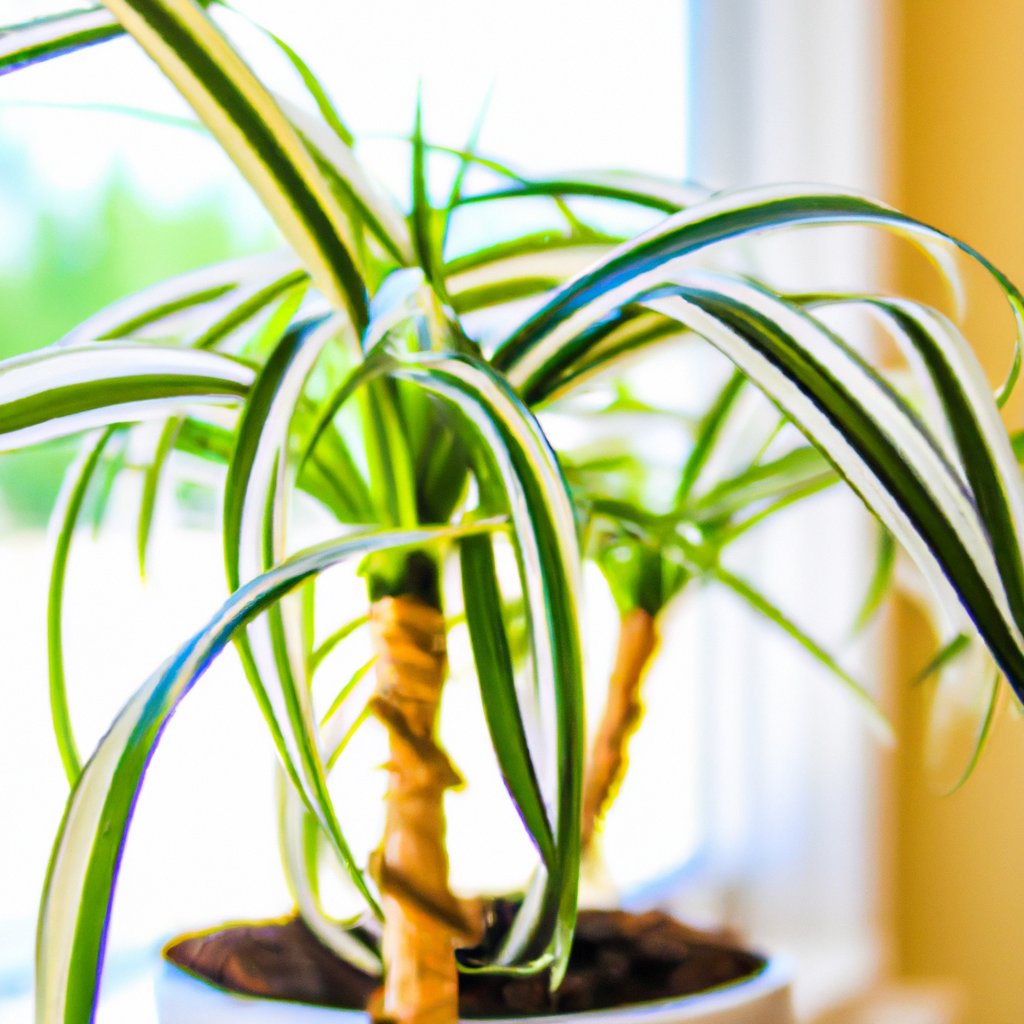Bringing a Spider Plant into your home can be an exciting addition to your decor, but also comes with certain responsibilities. As with all houseplants, there are special considerations to keep in mind when taking care of a Spider Plant. Here is a guide on how to get the most out of your Spider Plant, while ensuring its long-term health and well-being.
When it comes to caring for a Spider Plant, the type of environment you provide is critical. Spider Plants prefer warm temperatures, so avoid areas that get too hot or too cold. Place your plant near a window that receives indirect or northwestern sunlight for optimal growth. Even though Spider Plants are quite forgiving in terms of light needs, it’s important you don’t place your plant in an area that gets more than 5 hours of intense afternoon sun – as this can cause the leaves to become scorched and dull.
Spider Plants also require regular watering, but like all plants, overwatering is a common mistake. It’s best to check the soil before you water and make sure it’s dry before proceeding. Water your Spider Plant thoroughly, but only when necessary. Allow the soil to dry out a bit before adding more water – it’s better to underwater than overwater. Also remember not to let water accumulate in the pot or tray – make sure it drains freely.
Another important factor when taking care of your Spider Plant is fertilization. During the growing season, fertilize your Spider Plant every other month with a diluted balanced liquid fertilizer (no more than half strength). Don’t fertilize during winter as the plant enters a dormant period and no longer needs extra nutrition. Additionally, avoid fertilizing if your plant is already exhibiting signs of stress, such as brown or yellowing leaves.
Spider Plants are also susceptible to a variety of common houseplant pests, such as aphids, spider mites, mealybugs, and scales. If you notice something moving around on your plant, it’s important to identify the pest and treat it immediately before it spreads to other plants in your home. If left unchecked, pests can cause irreparable damage to your plant and potentially spread to other plants in your home.
The final component to consider when caring for a Spider Plant is potting mix. Spider Plants need soil that is well-draining and contains organic matter – so potting soil with added perlite and compost is a great option. Additionally, many experts recommend adding some sort of slow-release fertilizer to the potting mix for additional nutrition. This ensures that your plant has access to the necessary nutrients it needs over time.
Finally, it’s worth mentioning that other varieties of house plants have different care needs – so any advice pertaining specifically to Spider Plants may not apply to other house plants. For example, the Sword Fern requires high humidity and more frequent waterings than Spider Plants – so it’s important to research each specific plant carefully before buying and bringing it into your home. Sword Fern is a great resource for all things related to this particular species.
By following these simple care instructions and keeping a close eye on your Spider Plant, you can ensure its health and vitality for years to come. With proper attention and care, you can enjoy a beautiful, vibrant Spider Plant in your home that will bring long-lasting joy.
